Between 27-30 May 2019 the Palace of Parliament of Bucharest hosted the proceedings of the 8th European conference AeroDays. Launched in 1991, the European Aeronautics Days (Aerodays) represents the leading event in aviation research and innovation, a platform to share and review the latest developments in aeronautics and air transport across the European Union. This edition has been a global one though, by the highest level participation from the United States, China and Russian Federation, indicating the EU competitiveness in aerospace R&D. For the first time în Central and East Europe, AeroDays inaugurated at its 8th edition an innovative concept, TandemAEROdays19.20, based on two integrated events organized in Romania, in 2019, and Germany, in 2020.
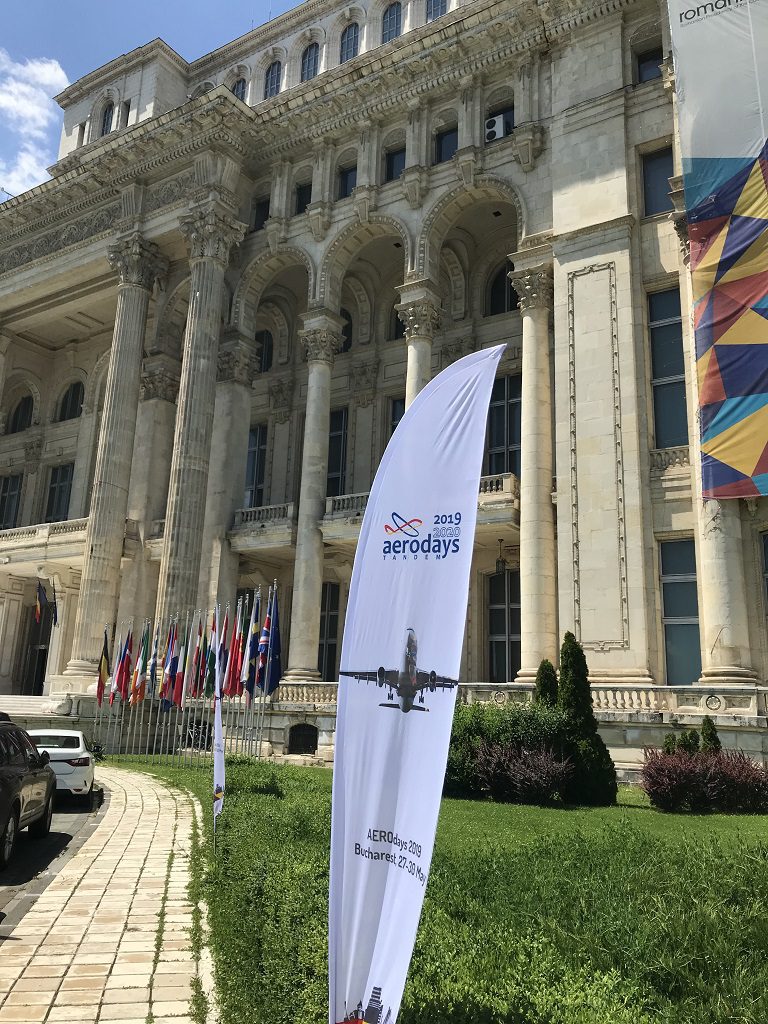
The main organizers of this tandem event are the National Aerospace Research and Development Institute INCAS and the Deutsches Zentrum für Luft- und Raumfahrt DLR, with support from the European Commision, within the Romanian Presidency of the Council of the EU. The personalities who authored this concept are Dr. Cătălin Nae, president of INCAS and EREA and Prof. Rolf Henke, executive board member of aeronautics of DLR, chair of ACARE.
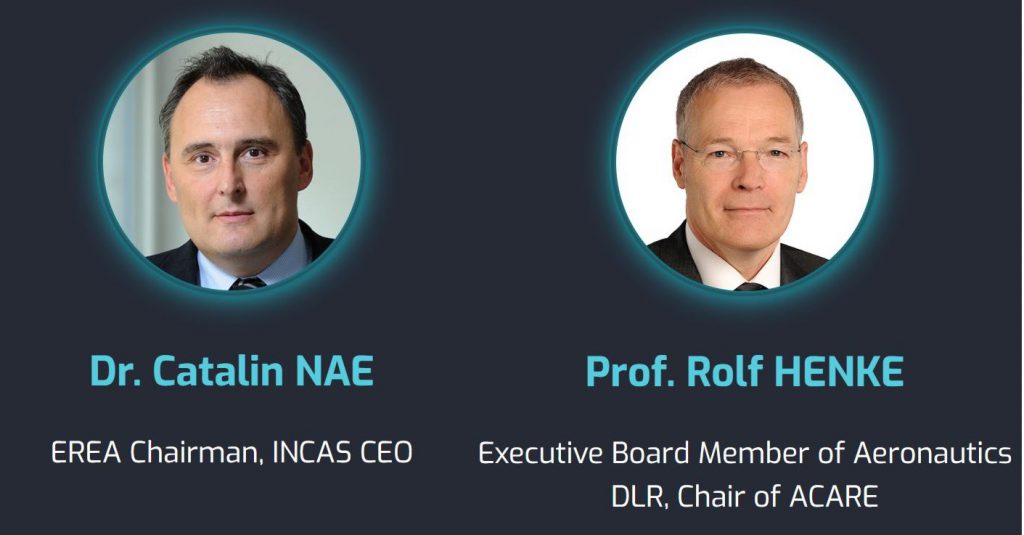
University Politehnica of Bucharest was reprezented by Rector Mihnea Costoiu, who was keynote speaker in the aeronautical education panel, moderated by Prof. Spiros Pantelakis, President of the European Aeronautics Science Network (EASN). The panel also included Dr. Joris Melkert, Dean of TU Delft and President of PEGASUS, and Rita Ponza, CEO of HIT09 (an aerospace engineering spin-off of the Univ. of Padova).
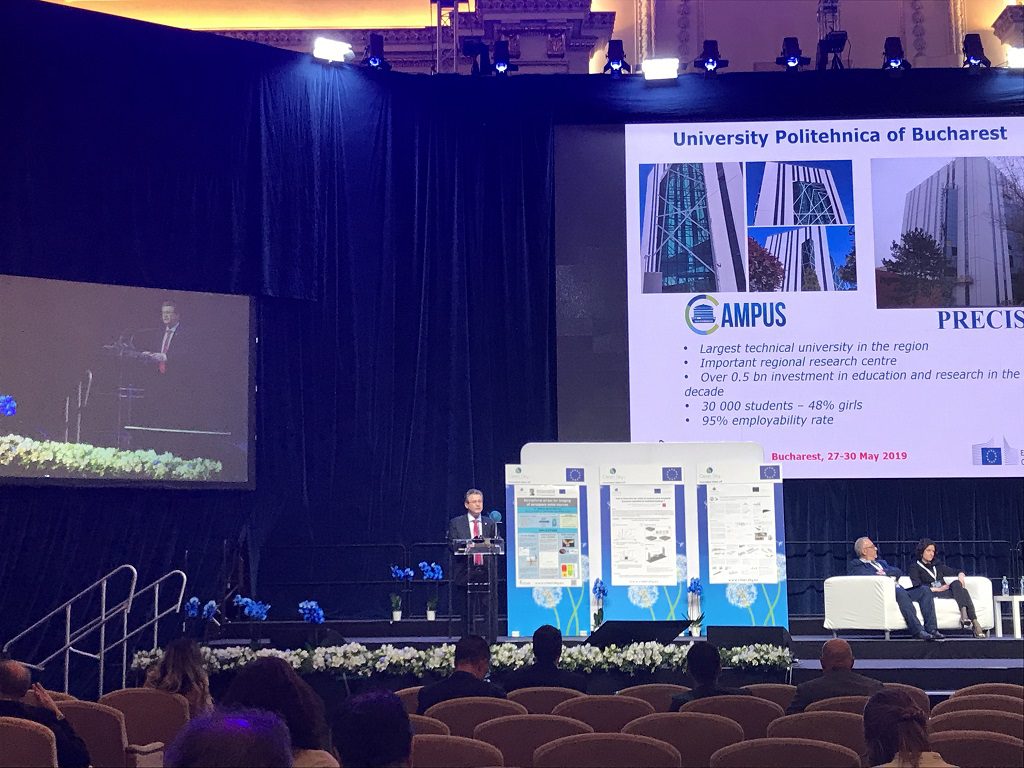
Also, UPB enjoyed a generous exhibition space, with an electrical propulsion UAV (Volta), created by a team of our Alumni within a UPB contract. Banners with aircraft designed and manufactured by prestigious professors or graduates of the Aviation Section of the UPB were also displayed, and Prof. Elie Carafoli, Prof. Ion Grosu and Eng. Iosif Șilimon were there.
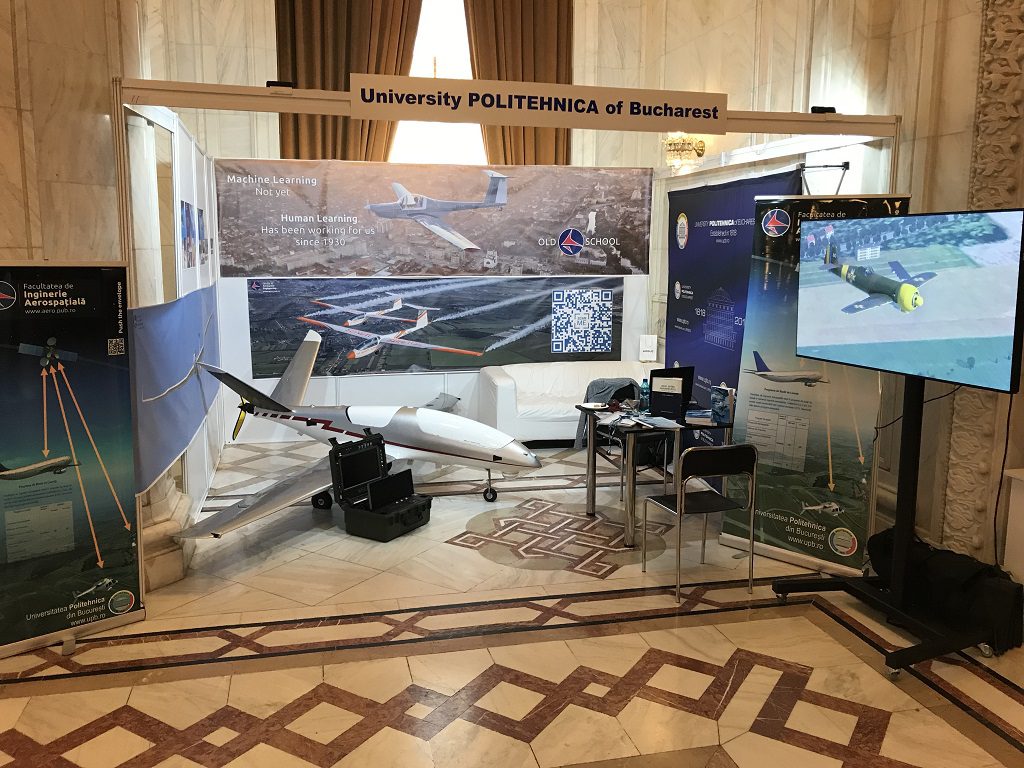
Among the high profile Alumni, we also presented Eng. Bogdan Marcu, rocket propulsion expert of the Falcon 9 launcher within the SpaceX program and General Cosmonaut Dr. Dumitru Dorin Prunariu, the first and only Romanian astronaut.
The presence at the conference of Dr. Jaiwon Shin, leader of NASA Aeronautics Research, gives an indication of the international impact of this major event. On 30th of May, we had the pleasure to welcome Dr. Shin among our students and staff, at UPB FAE.
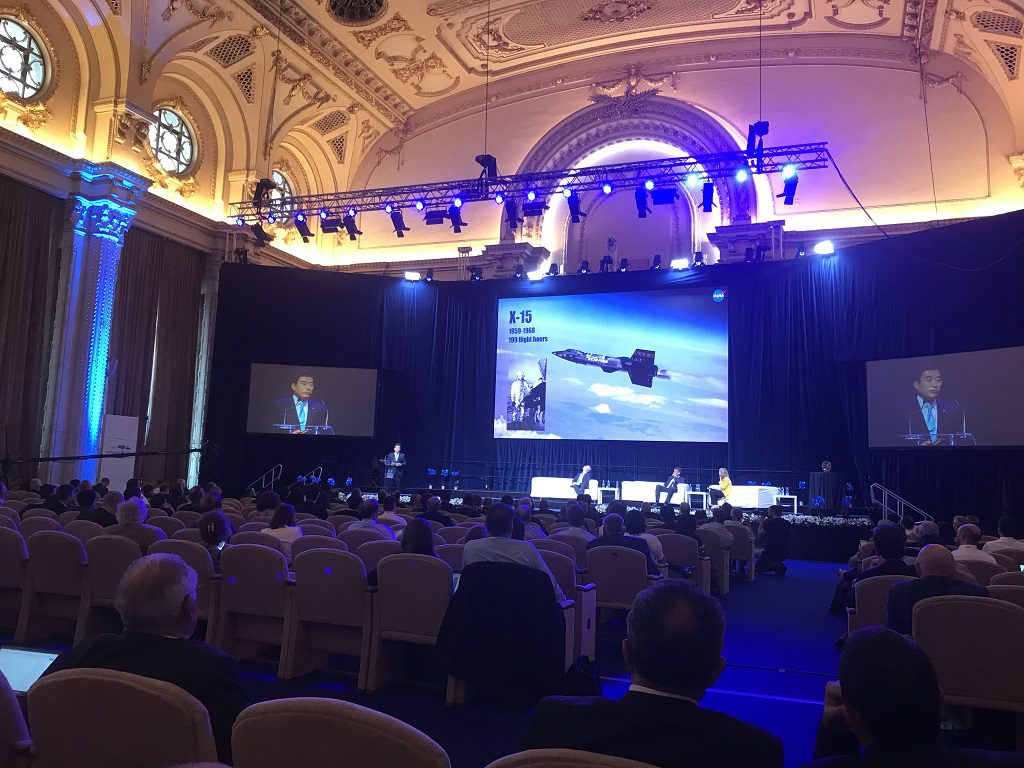
At the Industrial Competitiveness Panel, Serge Durand, General Director, Airbus Helicopters Romania mentioned that in every Airbus airplane flying, one can find at least two major parts manufactured in Romania. This statement was a major recognition of the Romanian aerospace industry competitiveness. We may add that the contribution of the Romanian engineers does not begin with manufacturing, but also a great deal of the Airbus airplanes design was subcontracted to Romanian branches such as GKN Fokker Engineering Romania, ALTEN Delivery Center, AKKA Technologies, Assystem etc.
In the scientific section, a team of UPB FAE (myself and Lect. Dr. C. E. Constantinescu) presented Machine Learning Applied to Aeronautical Safety and Security Optimization.
In the 3rd AeroDay, UPB FAE had the pleasure to host a very important meeting of the European Aeronautics Science Network (EASN). Prof. Spiros Pantelakis of the Univ. of Patras, President of EASN, greeted UPB FAE as a new member of the prestigious organization. EASN National Contact Points from 18 countries participated in the meeting.
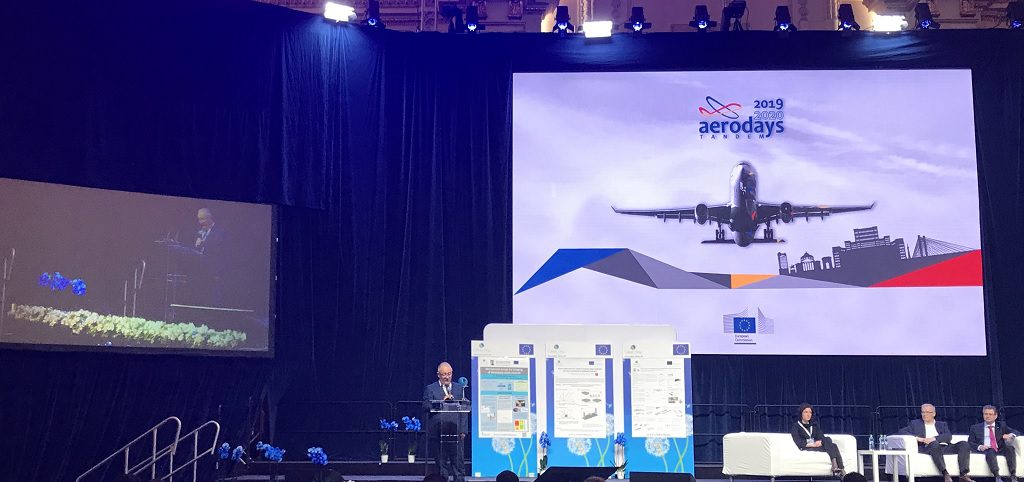
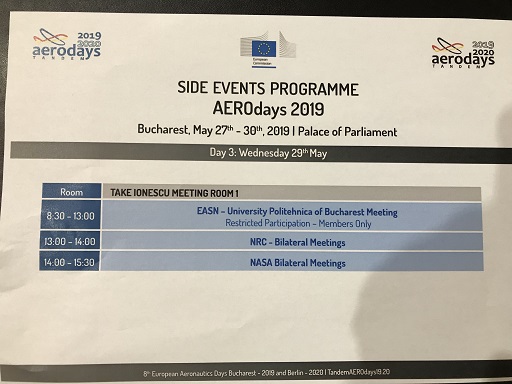
Joris Melkert gave an important speech on the future of the aerospace engineering education.
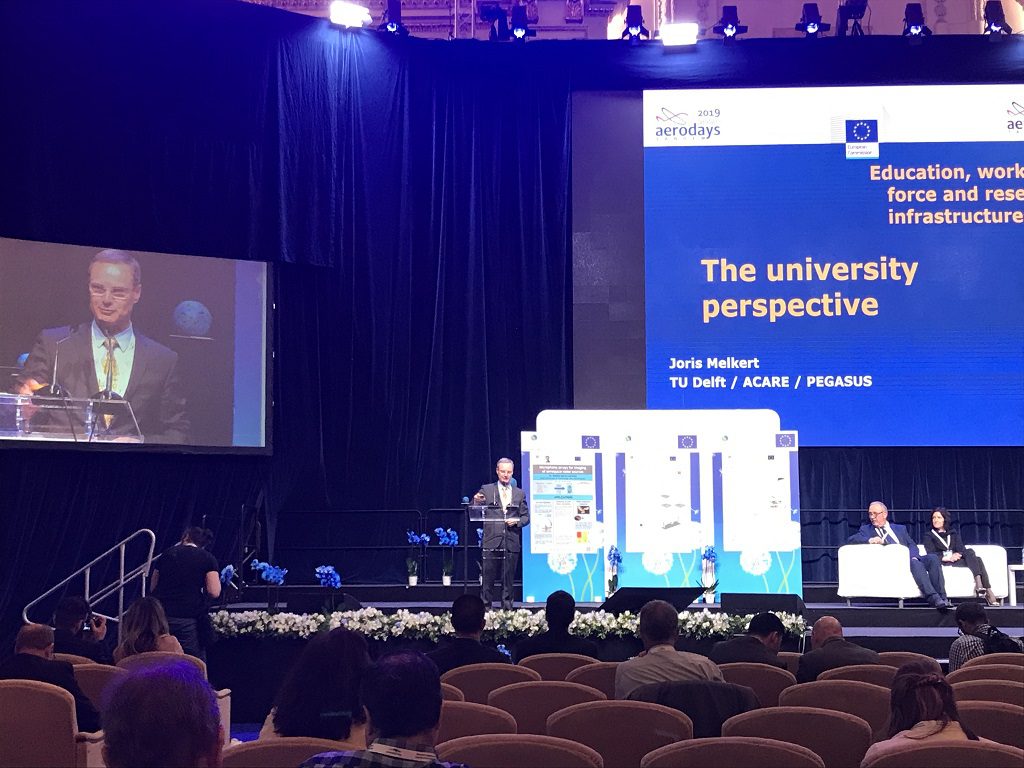
He mentioned the “challenges the future engineering workforce are facing:
- green the aviation sector
- increase the level of safety even further
- have increased digital skills
- be proficient in working in international, multidisciplinary and cross-sectorial teams
- be prepared for jobs that do not yet exist
- be large enough”
“How can we use the 3 cycle system best?”
“Bachelor:
- teach all the basics
+ improve on digital skills
+ improve on team working skills”
Joris Melkert reiterated that “we should have an European system of content based quality control for both knowledge and skills so we are all on the same page” and he mentioned the PEGASUS project, where INCAS is a full member.
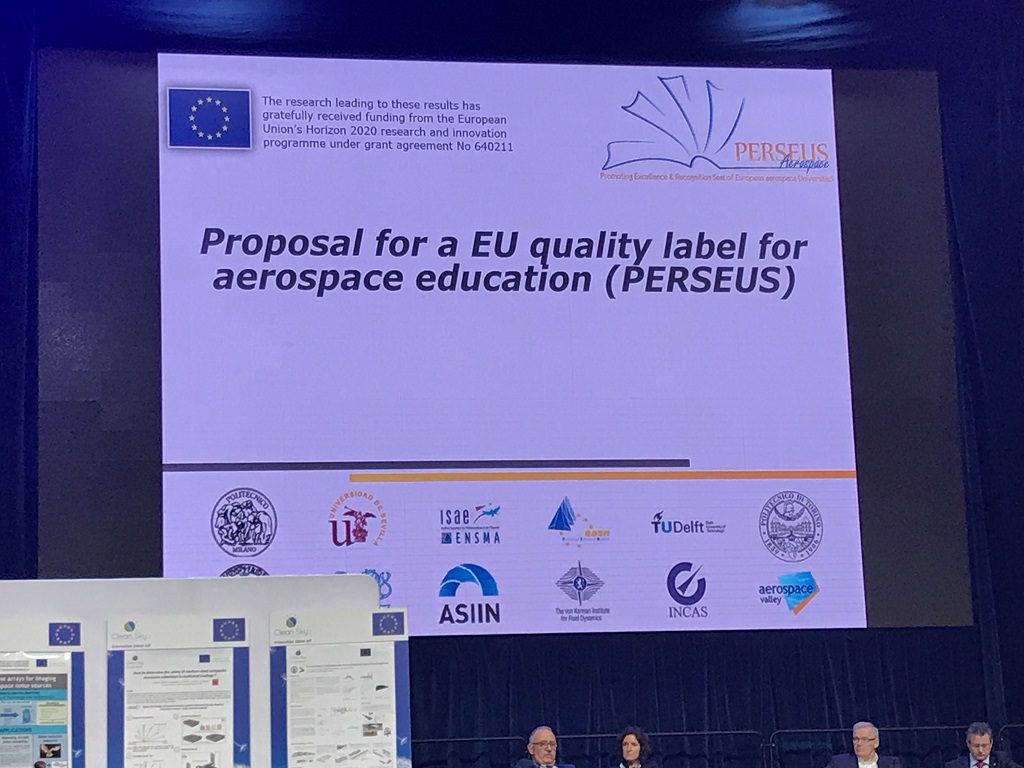
“Master:
- The place where students learn how to specialize
- The place where you can adapt quickly to stakeholder inputs via elective courses”
Specialization should be taken with a caveat!
“Specialization Not because you will remain an aerodynamicist, structural specialist / propulsion engineer / aircraft designer / control engineer for the rest of your life.
But because here you learn how to become a professional (life long learning)”.
“PhD:
The place to invent the future
This is where developments start that will be part of the next generation(s) of aircraft
This is also the place where ideas for new start-up companies are born”
We asked Joris Melkert what should be the output of the aerospace education system? Aerospace engineers or aerospace scientists? He gave an interesting and ambivalent answer: we target aerospace engineers, but the best way to achieve this target is through high level of aerospace science! He said that the best aerospace science schools provided the best aerospace engineers.
In the expo area, all major European aeronautical research achievements were ilustrated by mock-ups, samples, experimental set ups, aircraft models.
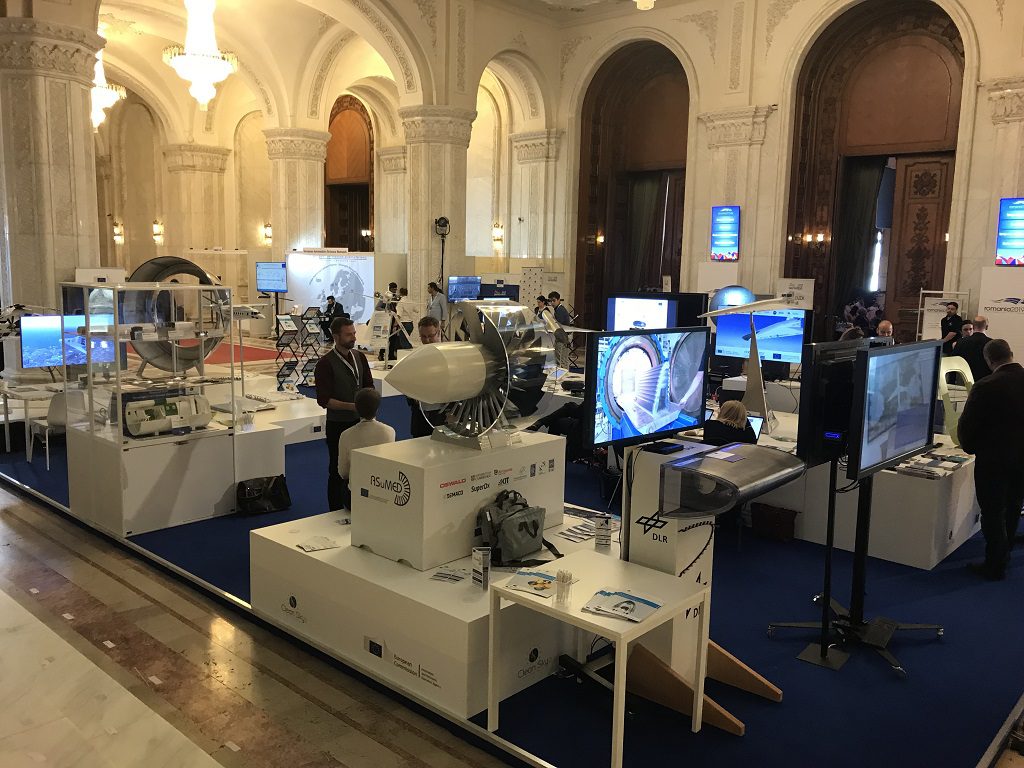
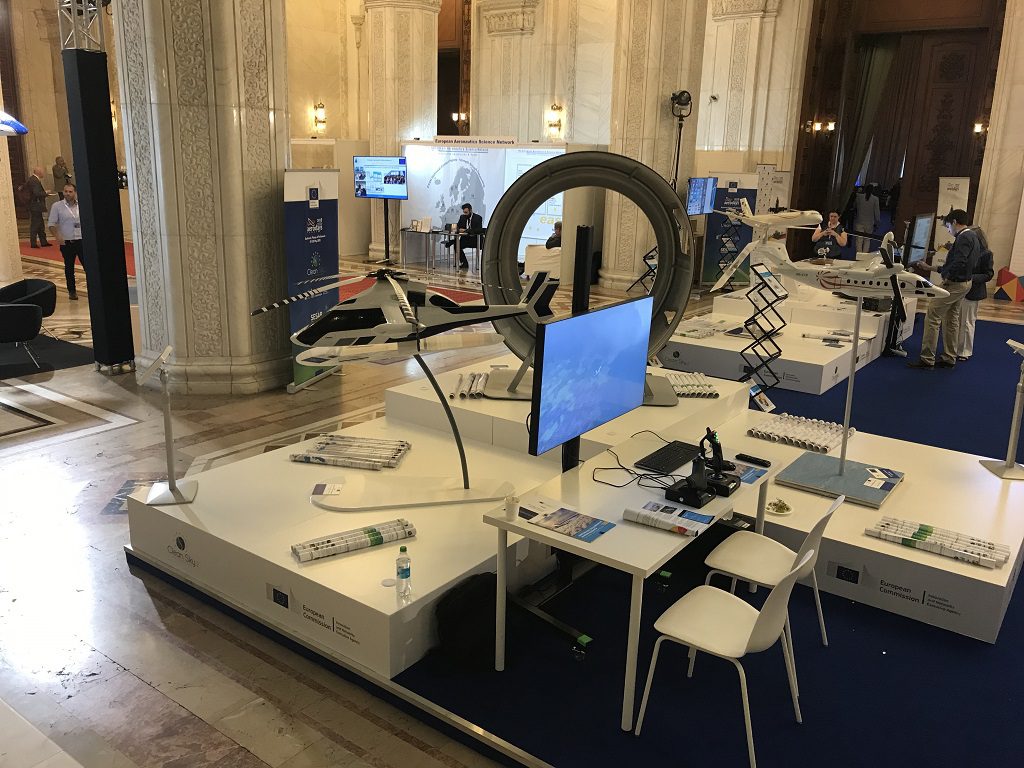
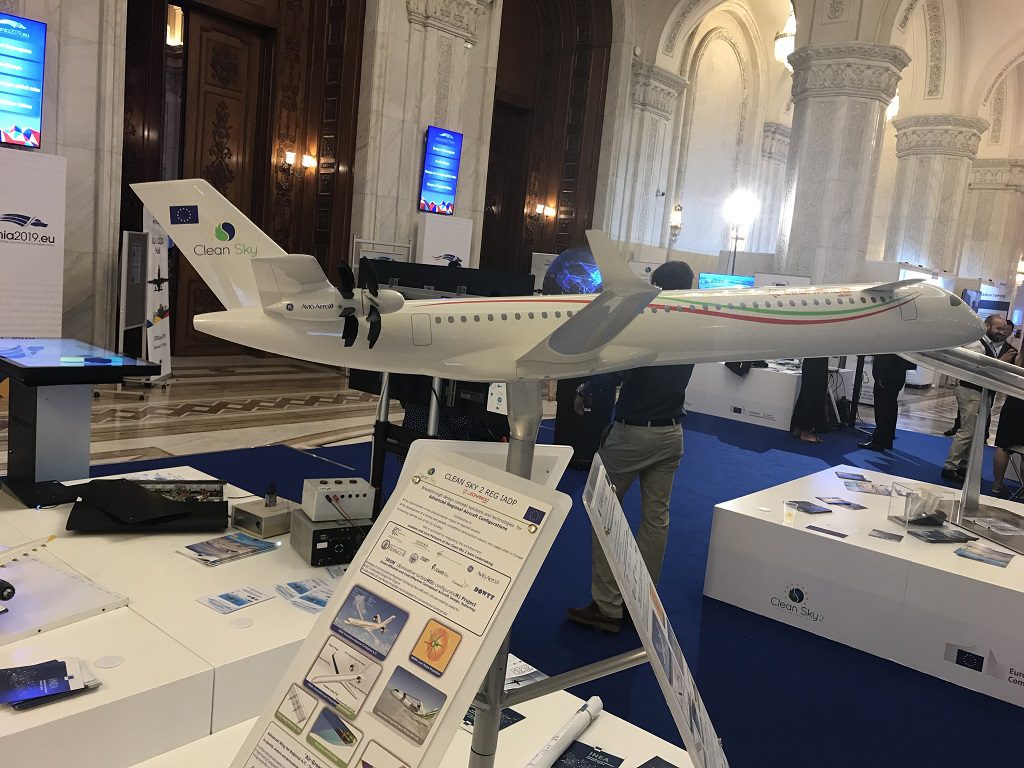
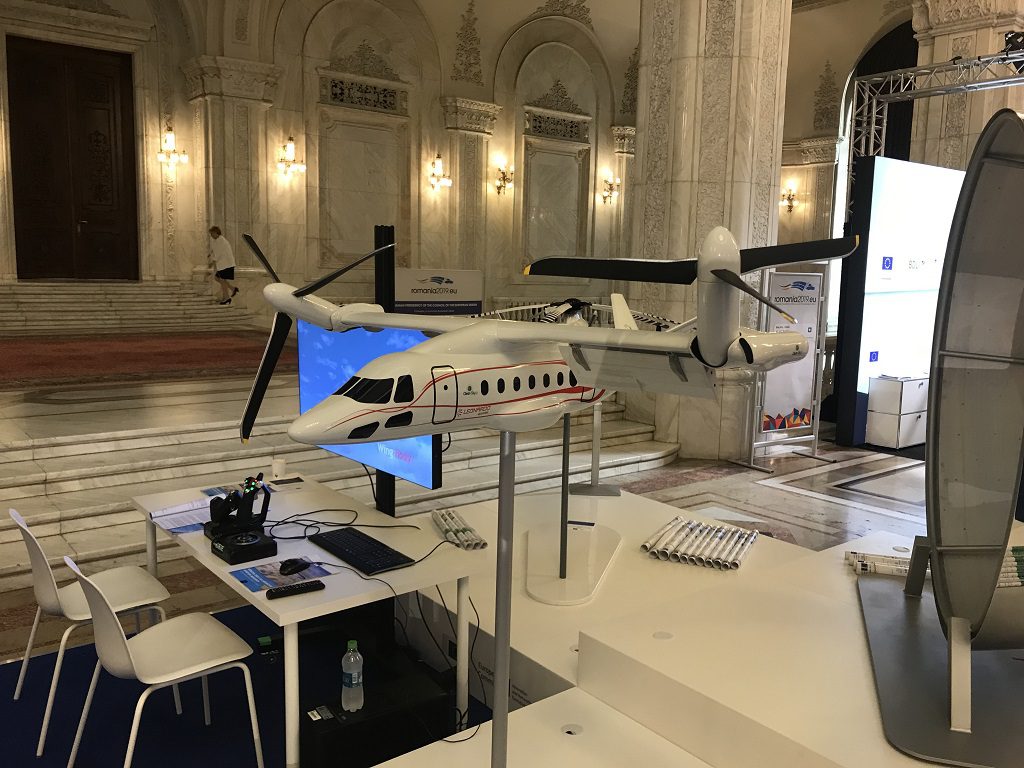
ROMAERO presented a project for an electrical BN-2 airplane, developped in partnership with a UPB FAE team led by Assoc. Prof. Petrișor Pârvu.
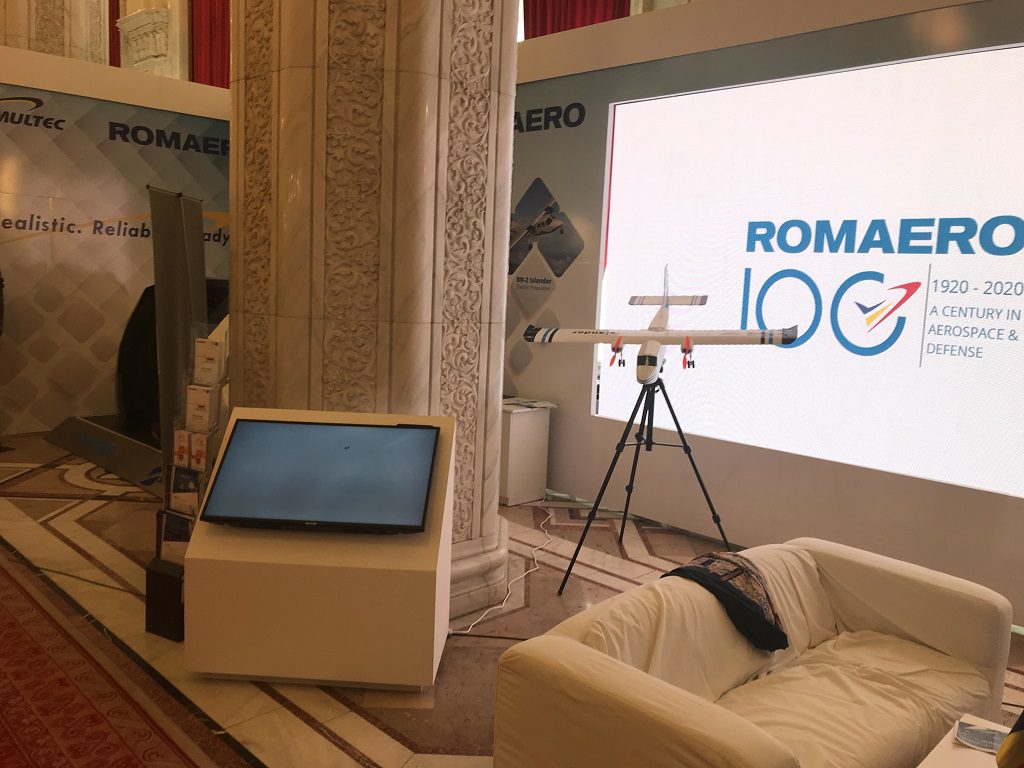
At AeroDays 2019 we had the pleasure to meet a lot of graduates of the Faculty of Aerospace Engineering of UPB, starting with the acclaimed organizers: Dr. Cătălin Nae, president of INCAS and EREA, Eng. Claudia Dobre, organizer of AeroDays 2019 (INCAS). Here below, I am with Eng. Ovidiu Dumitrache of EUROCONTROL (left) and Dr. Cătălin Fotache of United Technologies Research – Pratt & Whitney (right).
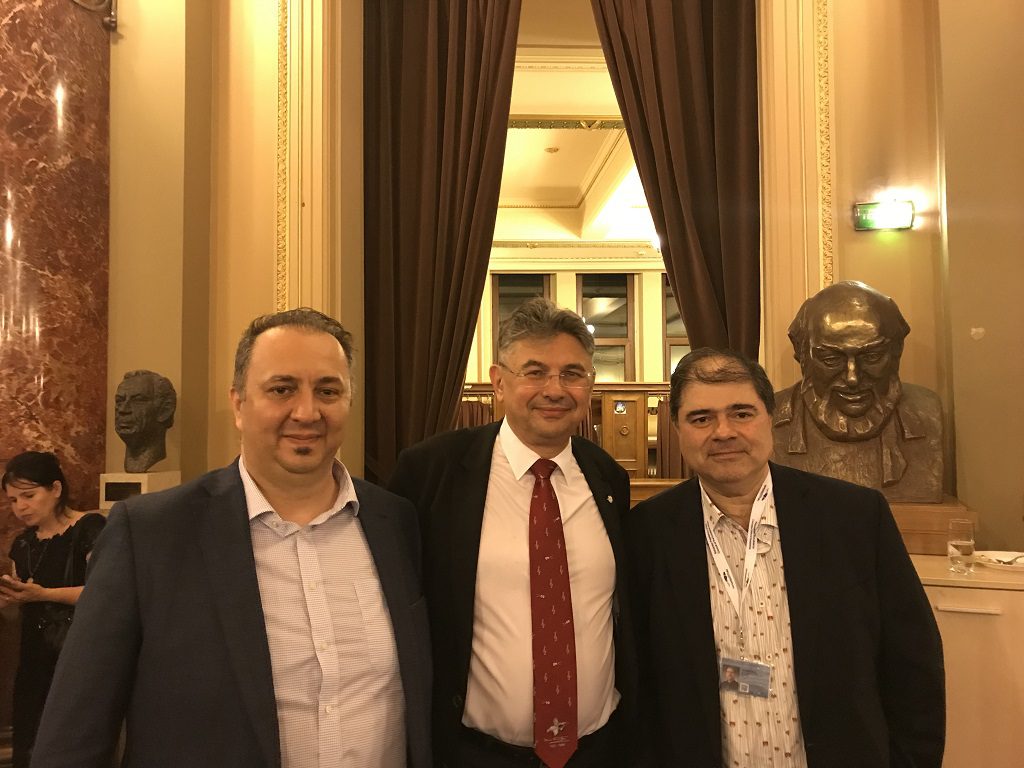
French-Romanian Company of Air Navigation
French-Romanian Company of Air Navigation (“Compagnie Franco-Roumaine de Navigation Aérienne”) was founded by Aristide Blank, a controversial Romanian banker, using French ex-military pilots, made redundant after the war. The company was located in rue de...
Polizu Wind Tunnel
The Wind Tunnel in Polizu at the time of its inauguration represented one of the most advanced aerodynamic labs in the world. The tunnel was designed by Ion Stroescu (1888-1961), based on an original blue print, which included a patent and more innovations...
Aerospace Structures Laboratory
Equipping the Aerospace Structure Laboratory with an AG6 aircraft The Faculty of Aerospace Engineering wishes to warmly thank the management and staff of AEROSTAR S.A. Bacau that contributed to the endowment of the Aerospace Structures Laboratory by donating a...
Air Navigation Laboratory
Air Navigation Laboratory was inaugurated in 2010 in partnership with ROMATSA and the Romanian Civil Aeronautics Authority
Jet Engines Laboratory
Jet Engine Laboratory - Sectioned Viper 632-41R jet engine built by Turbomecanica under license from Rolls Royce - used for the Romanian-Yugoslav fighter aircraft IAR-93 Orao and the Romanian IAR-99 Soim advanced training jet and light attack aircraft. ...
Experimental Aerodynamics Laboratory
The Experimental Aerodynamics Laboratory of the Faculty of Aerospace Engineering is one of the oldest in the world (1931), serving over the years in the design of many types of aircraft - now upgraded with state-of-the-art data acquisition systems....
Flight Test and Experimental Models Laboratory
The Flight Test and Experimental Models Laboratory has been involved for 10 years in the major international UAV competitions. In 2015 in the United States, the Phoenix team of the Faculty of Aerospace Engineering, led by Prof. Eng. Petrisor Pârvu, ranked 4th...
Avionics Laboratory
The Avionics Laboratory enables students to engage in aeronautical, radio navigation, radio communication, automated systems, electronic, electric and power experiments - aerospace engineering is multidisciplinary in excellence covering all these areas of...
TeCHALLENGE
Honeywell Romania, POLITEHNICA University of Bucharest, together with the School Inspectorate of Bucharest, organize the competition of innovative projects in the field of energy from 17 May to 20 October 2017. The competition is open to both students enrolled...
Aero Expo and AFASES Brașov 2017
Aero Expo 2017 and the International Conference AFASES 2017 organized by the Henri Coandă Airforce Academy in Brașov between 25-28 May 2017 enjoyed a significant participation from the Romanian aviation community, and also from the presence of personalities...

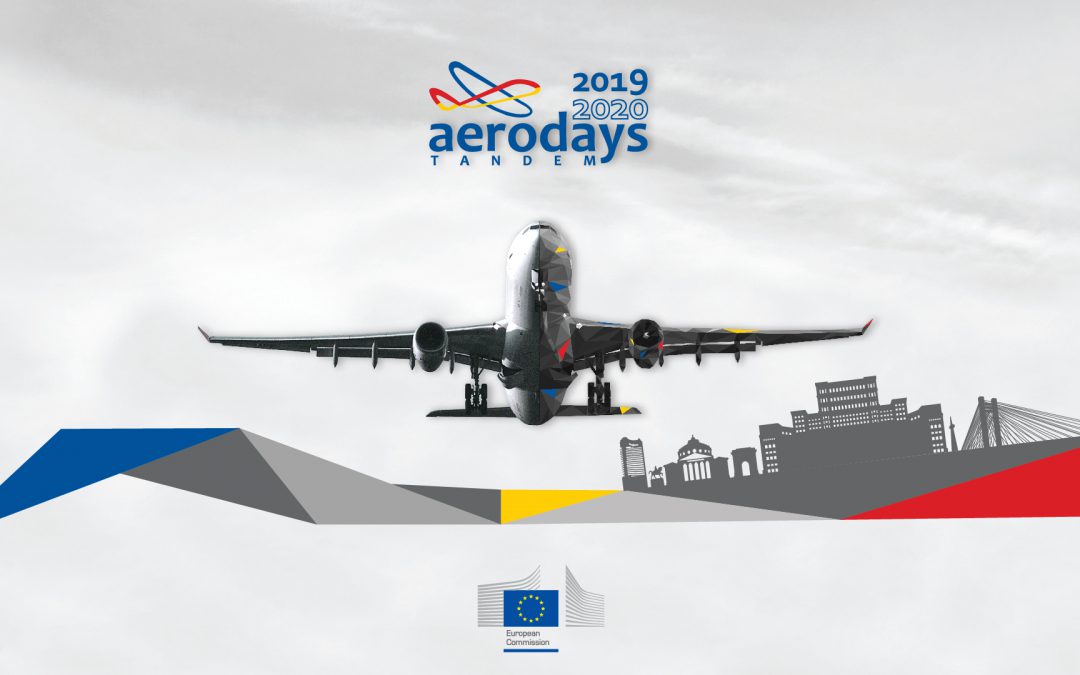
0 Comments